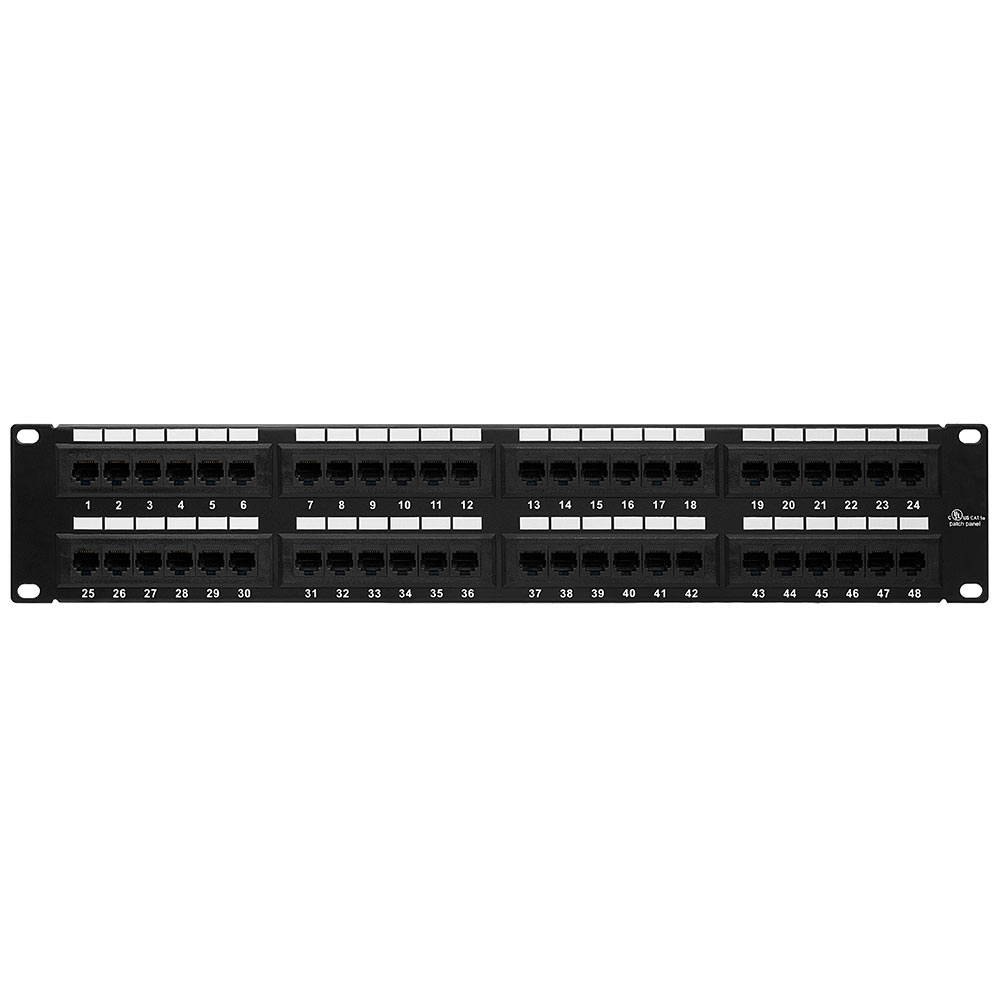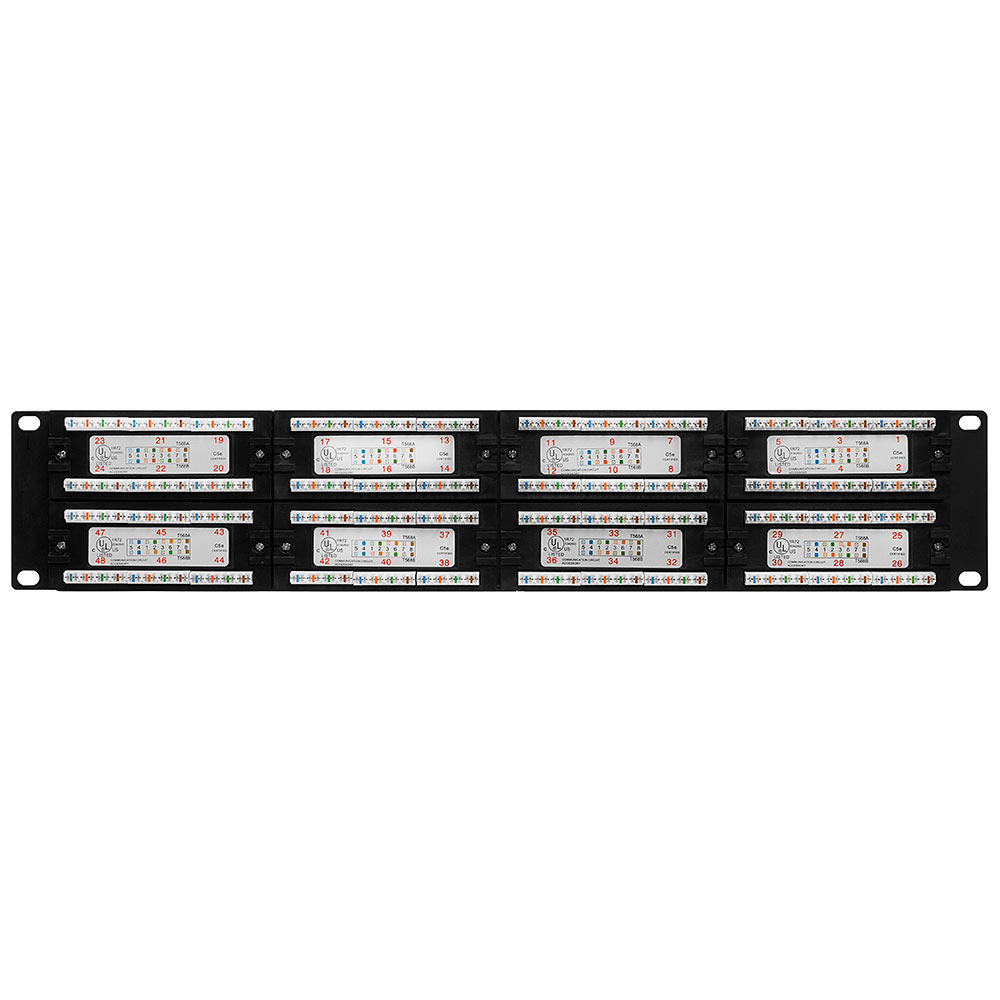Patch Panels
A patch panel is also known as patch bay, jack field or patch field. The patch panel includes a large number of circuits that may be similar or of the same type. The circuits are mounted on jacks and are used for interconnecting, testing or monitoring the transfer of data in a flexible and convenient manner.
The circuits contain network ports that are connected throughout the LAN (Local Area Network) or other electrical or electronic communication systems. A LAN circuit uses patch panels to interconnect different computers in the network or to other networks outside like the WAN (Wide Area Network) or the internet. Patch panels are connected using patch cords. These patch cords are easily rearranged depending on the type of connection that is required.
Uses of Patch Panels
Patch panels are widely used in the entertainment industry. Radio broadcast, television and recording studios along with concerts where sound reinforcement systems are required use patch panels. The panels allow different devices like electronic instruments, broadcasting equipment, amplifiers, microphones and recording gears to easily connect in one place.
Patch panels allow you to connect many different devices for different projects and in various ways. This is possible because of the ease that the panel provides when removing or attaching a device. Patch panels are used at home or for amateur project studios as it is easier to do the trouble shooting process for problems like ground loops. This allows you to connect devices easily without searching for the right jack every time you want to plug in the device and use it. The life expectancy of all input jacks, which belong to various instruments and studio equipment, increases with the use of patch panels.
Usually to avoid confusion, the top row of the jacks is wired to outputs at the rear and the bottom rows are wired to input devices. A normal patch panel involves interconnection between the top and bottom jacks. The connection is maintained internally in all full-normal patch panels and break contacts are included in both rows of the jacks. Half-normal patch panels are slightly different. The top row of the patch panel is connected to jacks at the bottom row with the help of break contacts.
When a patch cord is inserted in one of the top jacks of a half-normal patch panel, the internal link between the bottom and the top jack will remain and the signal feed will be taken off the top jack. However, if a patch cord is inserted in one of the jacks in the bottom row, it will cause the internal connection between the top and bottom jacks to break. The signal feed from the top row jack will be replaced with patch cord signals.
Types of Patch Panel Systems
There are different types of patch panels available in the market but the most common categories include Cat5e and Cat6 patch panels.
Category 6 Patch Panels
The patch panels are designed to provide a bandwidth of 250 MHz and beyond. They also exceed channel performance and permanent link specifications along with ANSI/TIA-568-C.2 component. These patch panels also provide backward compatibility with other low category cable systems. The patch panels are available in 12 and 48 port versions.
The front and rear labels are enhanced to provide a better and easy circuit identification. The ease of use does not end here. The patch panels also support T568B and T568A wiring schemes with easy to read labels that are color coded. Category 6 patch panels are also made keeping in mind that durability and strength are necessary along with the modular design to help increase the flexibility for the entire circuit during termination.
Category 5e Patch Panels
These patch panels provide a bandwidth of 155 MHZ and more. The patch panels like category 6 patch panels are designed to exceed channel performance, permanent link and ANSI/TIA-568-C.2 component specifications. Like other patch panels category 5e patch panel also includes an integrated system for strain relief and cable routing purpose. The 4-pair inline 110 type connector makes it easy to connect and terminate patch ports for the rear of the patch panel.
Comparison with Switches and Distribution Panels
Some applications can use dedicated switch systems in place of patch panels. There are many advantages that switches have over patch panels with one of them being that switches allow easy routing. A simple push of a button is all that is required and one signal can be easily routed to many different destinations concurrently.
Take an example of an ‘S-video matrix routing switcher’. It is by far more expensive compared with a 16 point S-video patch panel but it has added advantages of in-built distribution amplifiers and audio-follow-video.
There are numerous types of switches from the simple selector switches to sophisticated yet complicated industrial switches. However for a switch it is not easy to replace a patch panel. Only crossbar and routing switches or other specialized switches can replace the audio/video patch panels.
When comparing with patch panels there are different switches that are available for different types of signals like switches for networking, MIDI, RF switches, electrical switches, telephone and switches for almost anything and everything.
The equipment used for switching can either be electronic, electro-mechanical or mechanical. It is possible control some switching hardware with external devices and at times with computers. Other switches have operational abilities that are either pre-programmed or automated depending on the purpose that the switching equipment is used for. For areas of work that have a complete digital environment there are software switches that work and are used to route signals and control the various types of data.
Distribution frames are another alternative that can be used in place of patch panels. Even though distribution frames are less expensive when compared to patch panels they are still less convenient and allow only arbitrary interconnection unlike patch panels.
You can easily see that patch panels are much easier and convenient compared to switches and distribution frames.
You can find patch panels on cmple





